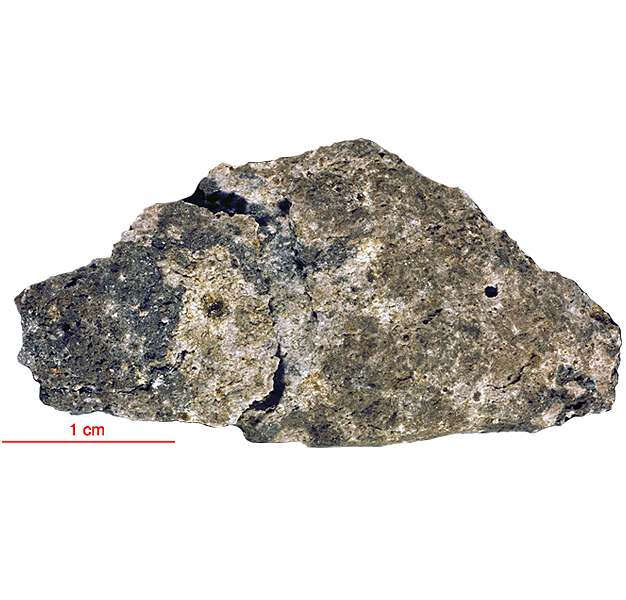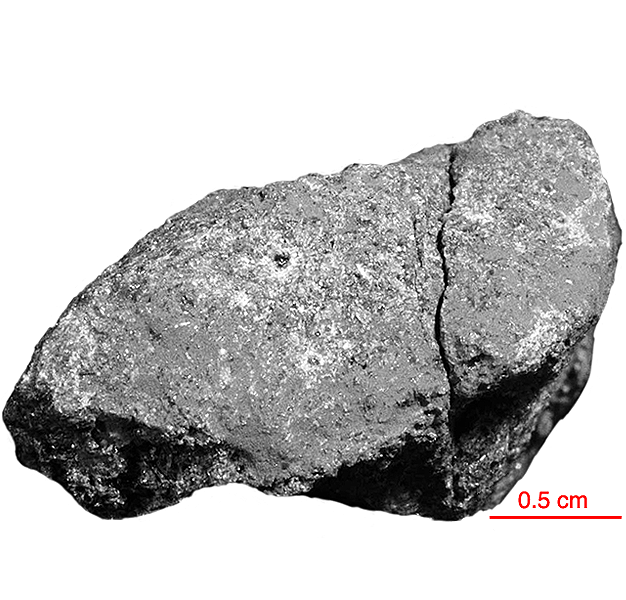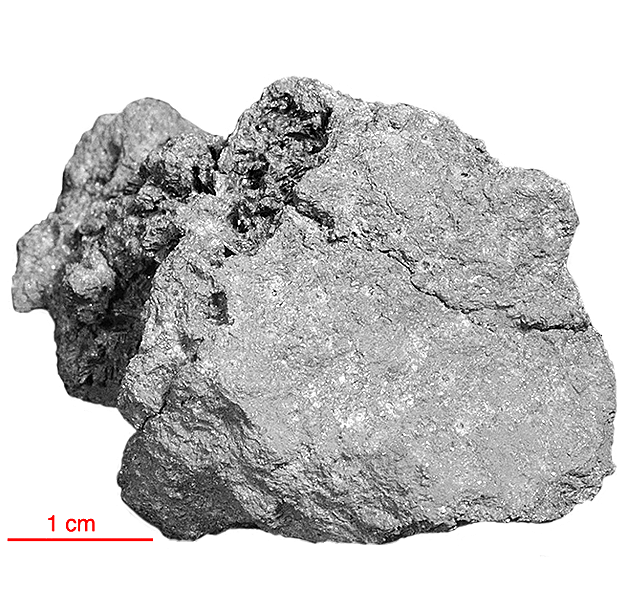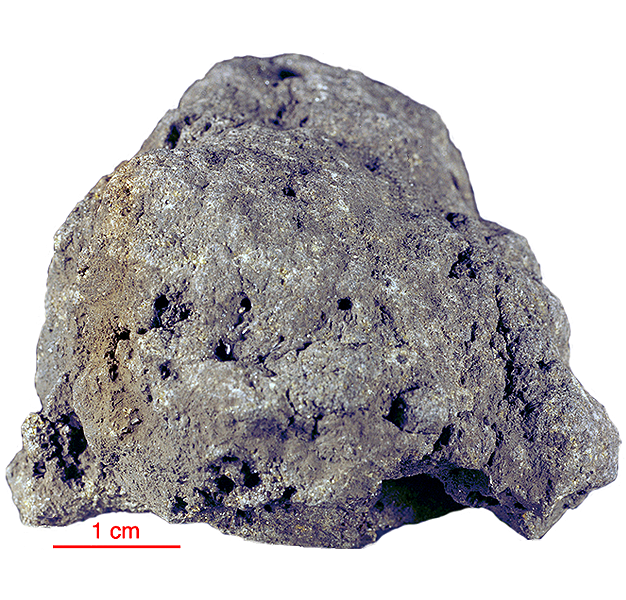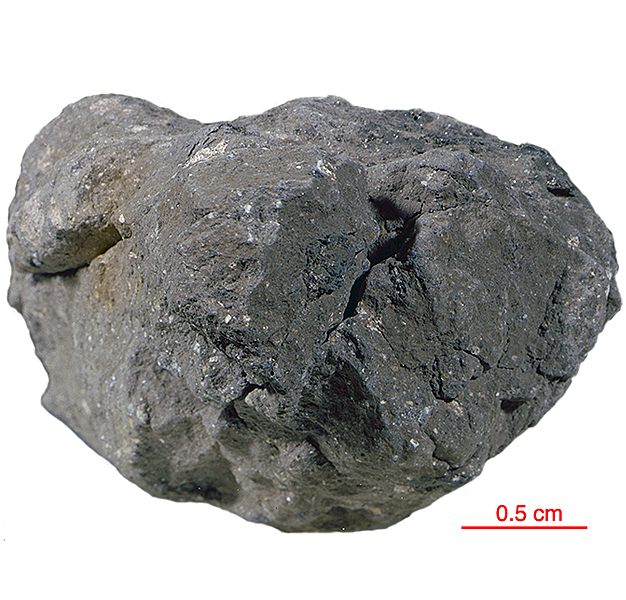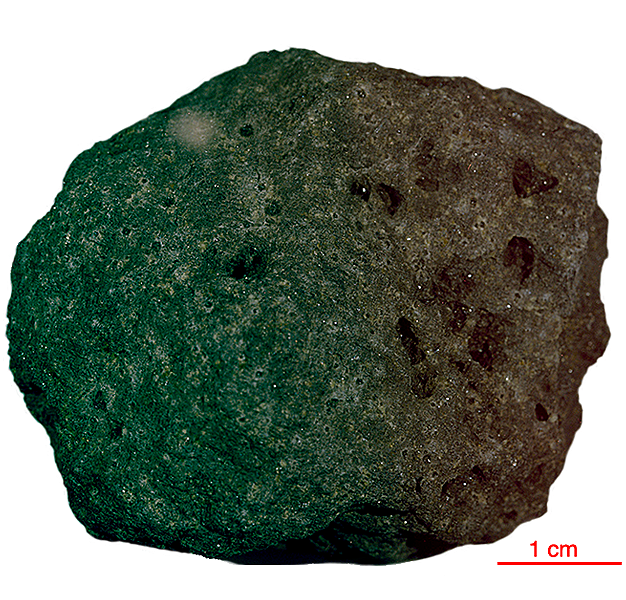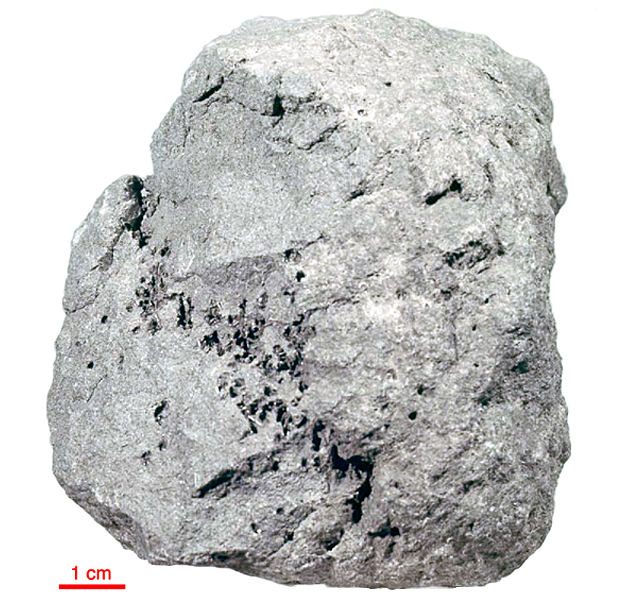
Fact sheet
12052 is composed of euhedral and skeletal phenocrysts of olivine and clinopyroxene (pigeonite cores with augite rims) surrounded by a groundmass including high-iron clinopyroxene, chrome spinel, ilmenite, pyroxferroite and anorthite. Compositionally zoned phenocrysts of pyroxene (3-4 mm) occur in random orientation, together with skeletal or rounded olivine crystals (1 mm) in a finer-grained variolitic groundmass of pyroxene-plagioclase and opaque minerals, chiefly ilmenite, which are parallel to the pyroxene laths. Pigeonite cores have sharp boundaries with augite rims. Ilmenite occurs as lath-shaped crystals up to 400 micron long and 50 micron wide.
The sample weighed 1866 grams before analysis and is 3.28±0.19 billion years old (Rb/Sr).
Further details of this and other Apollo samples are here: http://curator.jsc.nasa.gov/lunar/
Apollo 12 returned 34 kilograms of samples, including 45 rocks, samples of lunar 'soil', and several core tubes that included material from as much as 40 centimetres below the lunar surface.
Apollo 12 rocks were almost all basalts, with only two breccias in the returned samples. The basalts at the Apollo 12 site formed 3.1 to 3.3 billion years ago, roughly 500 million years later than the Apollo 11 basalts. Overall, there is much less of the element titanium in the Apollo 12 samples than in the Apollo 11 samples, which explains the more reddish colour of this region. The differences in age and chemical composition between the Apollo 11 and Apollo 12 samples demonstrate that mare volcanism did not occur as a single, Moon-wide melting event.
Apollo 12 was launched on 14 November 1969.

